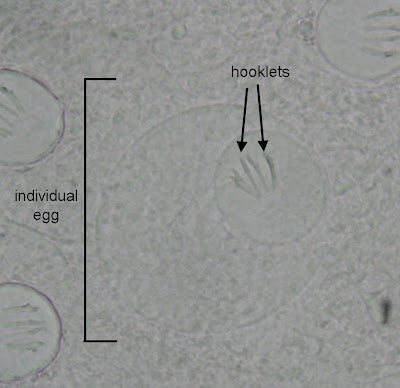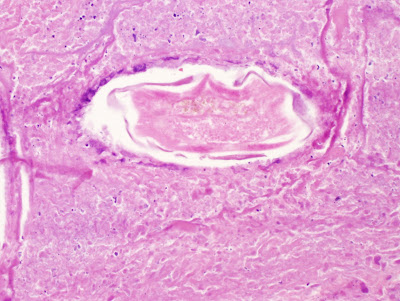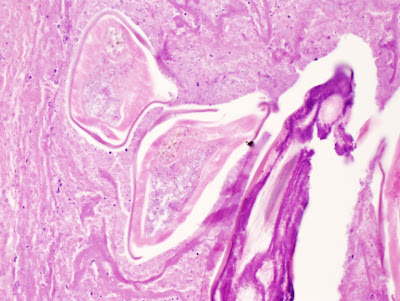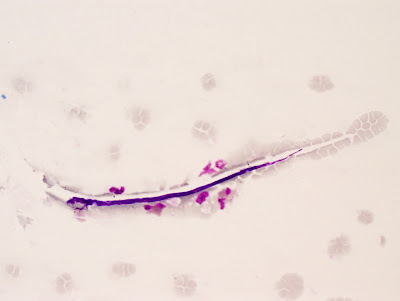Answer: Adult filarial worm, female
Differential diagnosis includes
Brugia and
Wuchereria species, including zoonotic
Brugia.
Additional history was received after the case was reviewed, which included a travel history to Central and South America. Therefore,
W. bancrofti is a strong consideration, and serologic testing would be advised. Peripheral blood films could also be identified for microfilariae, although this particular worm does not appear to be gravid and is also somewhat degenerated, indicating that it is no longer viable. For
W. bancrofti, blood for microfilariae examination should be obtained between 10 pm and 2 am when the microfilariae are released into the bloodstream.
Anonymous points out "In Pathoparasitology , the classic atlas by Michael Kenney, he says "except for W.bancrofti and aberrant eggs of schistosomes,no parasites are usually found in the testes". Thought this might help."
I agree - this is very helpful for formulating a differential diagnosis. The diagnosis microscopic features include:
1. coiled appearance on cross section with surrounding fibrosis
2. size/diameter
3. suggestion of a double uterus, consistent with an adult female filarial worm
Many times, microfilariae can also be seen within the uterus, although they were not present in this case.
I would like to thanks the excellent DPDx team who helped confirm my initial diagnosis and expand on the differential diagnosis. They have a very useful web site at
http://www.dpd.cdc.gov/DPDx/

































